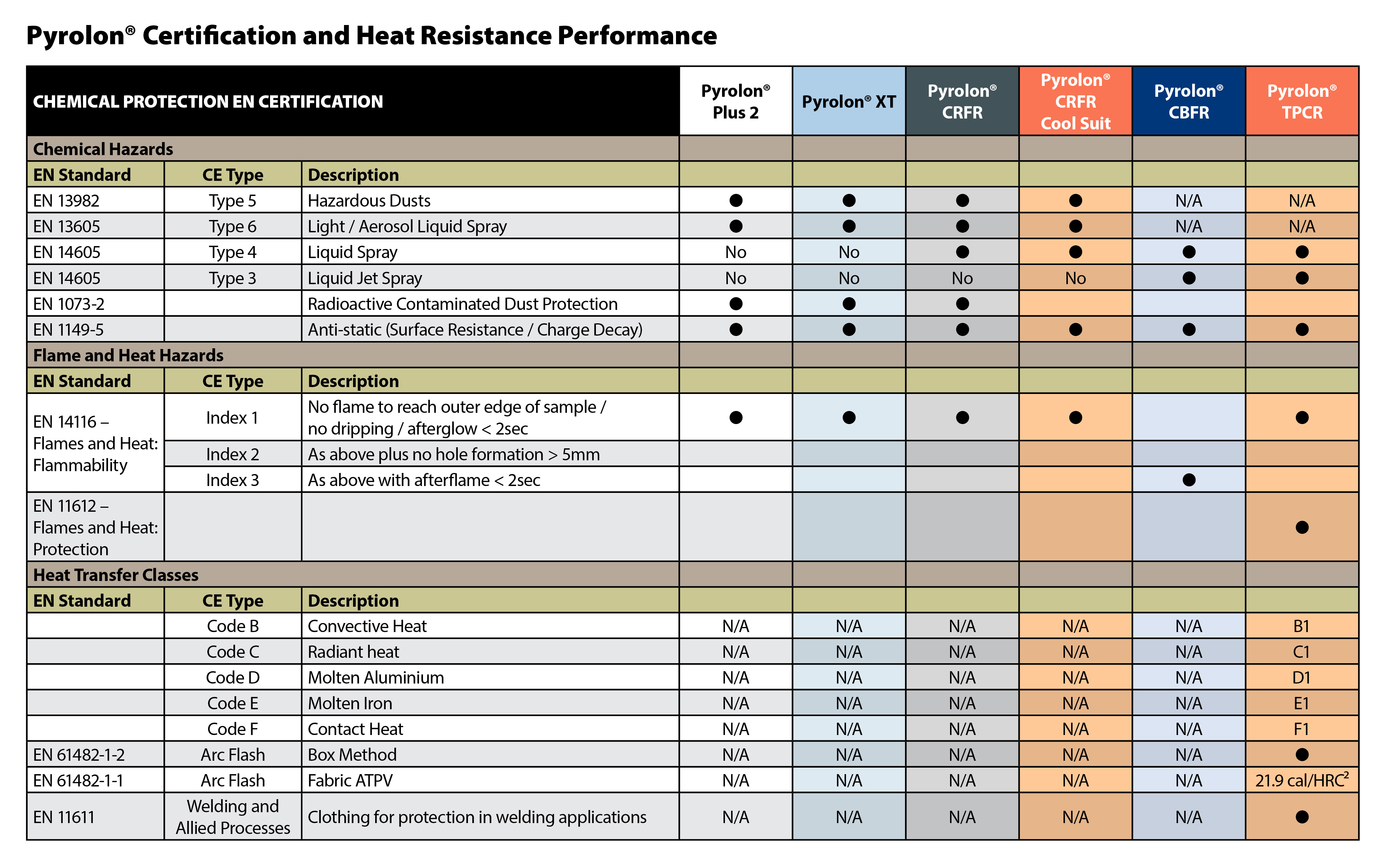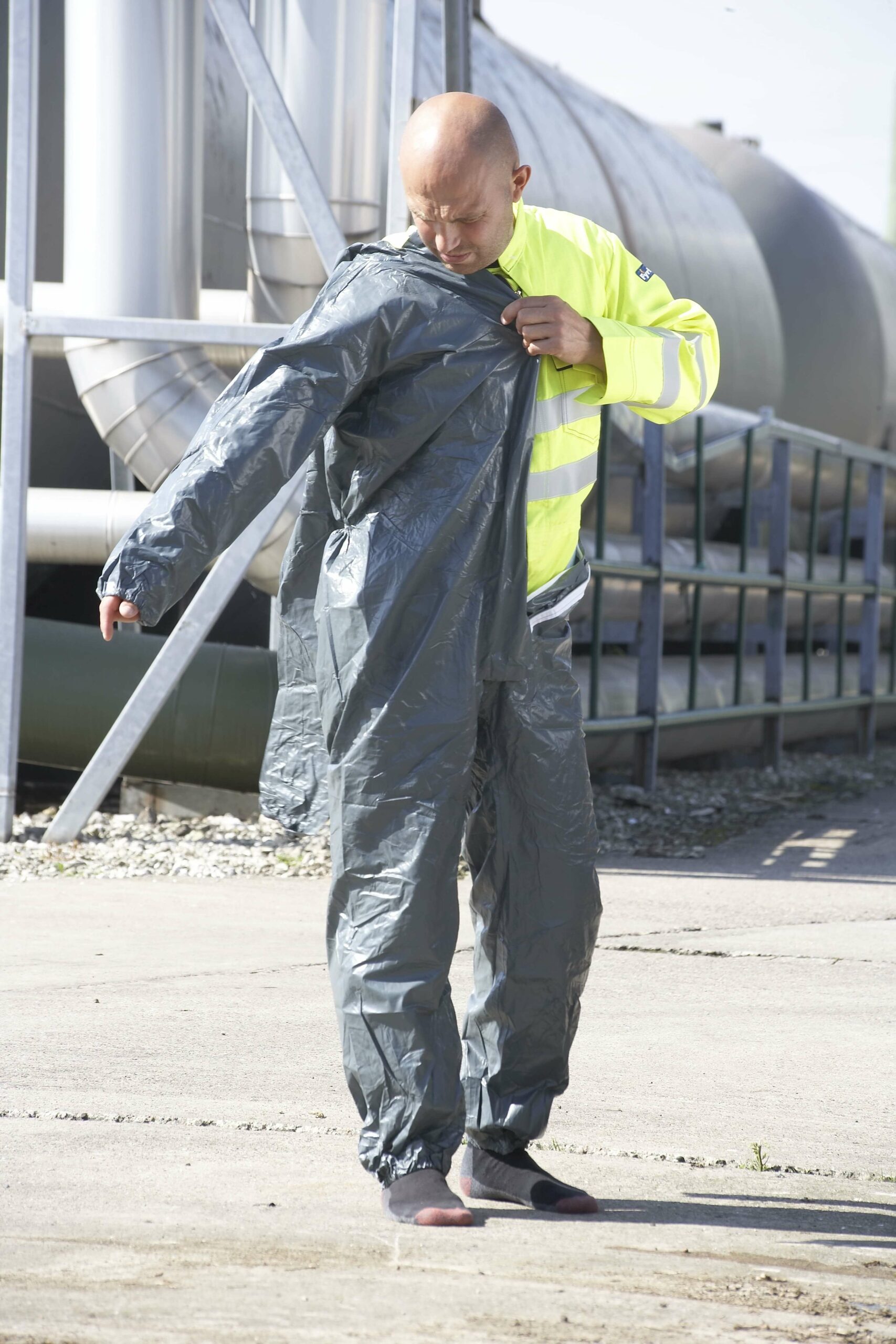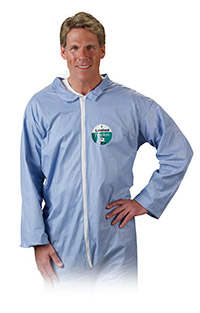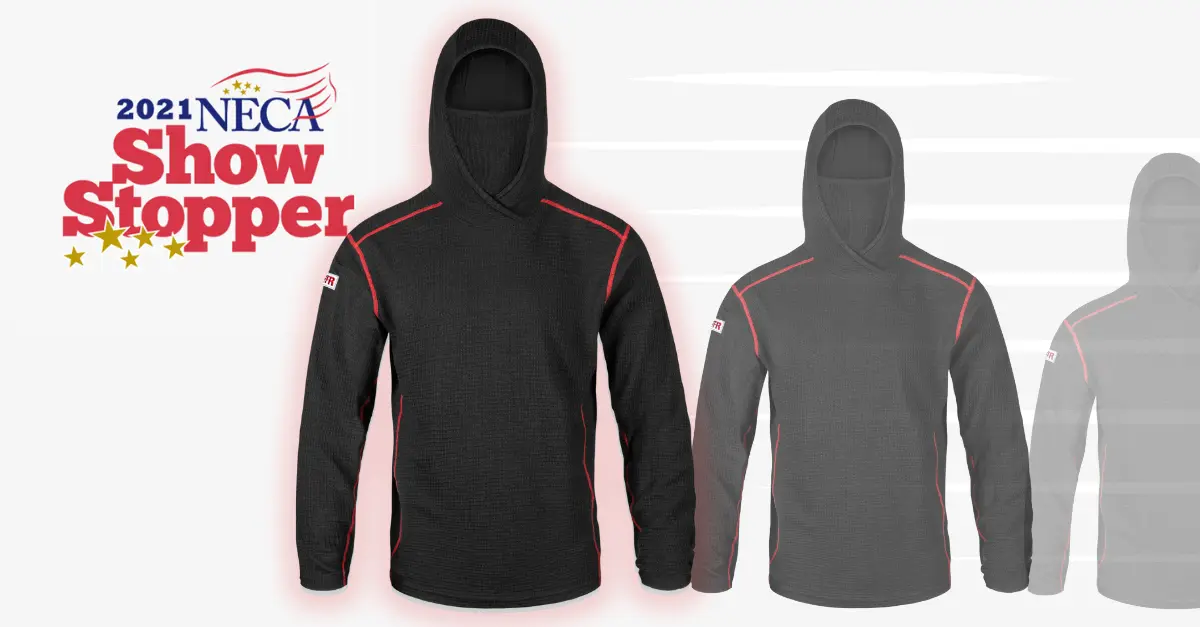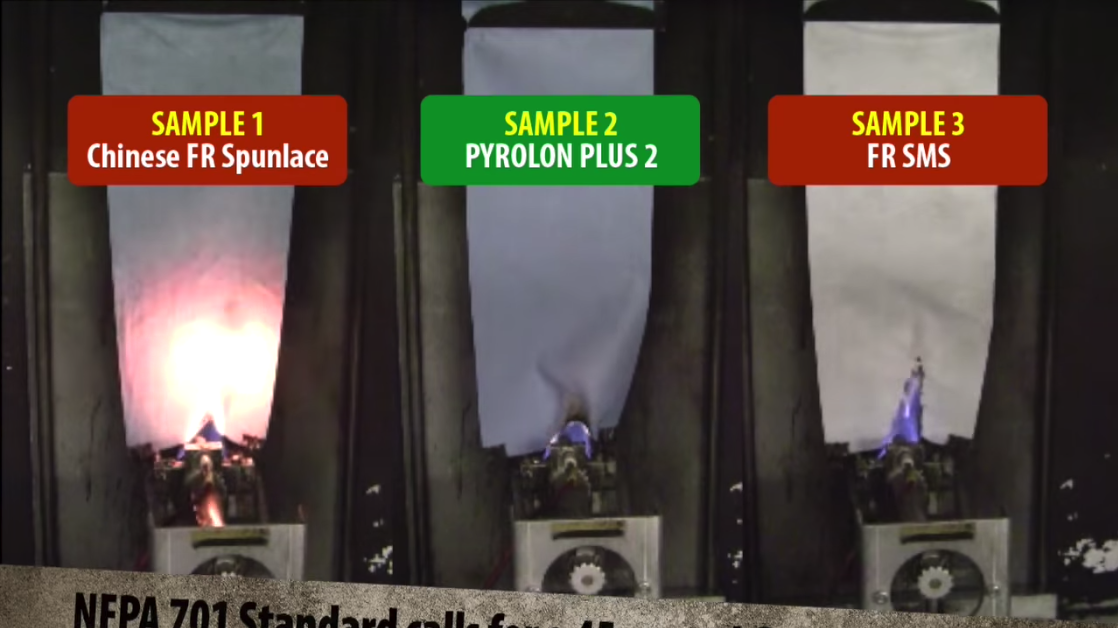Secondary FR disposables and chemical suits provide an important function – especially in the oil, gas and petrochemical industries – in that they enable users to wear suitable chemical protection over their FR workwear without compromising flame and heat protection. Yet some types of secondary FR disposables show very poor performance in testing, and the additional requirements in the 2015 version of the EN 14116 standard may have critical implications for their availability.
In applications where both chemical and FR protection is required, a common solution is to wear standard chemical suits OVER the FR workwear. However, this creates a hazard because standard chemical suits are made of thermoplastic polymers such as polypropylene and polyethylene. Thus, in contact with flames they will ignite, burn and drip molten debris onto the FR workwear beneath, transferring additional heat energy to the skin of the wearer below. Thermal mannequin tests (see below) have shown that wearing standard disposables over FR workwear can critically compromise the thermal protection.
Unlike standard disposables however, secondary FR disposables are specifically designed to be worn over FR workwear in order to provide chemical protection without compromising flame and heat protection, thus solving the problem.
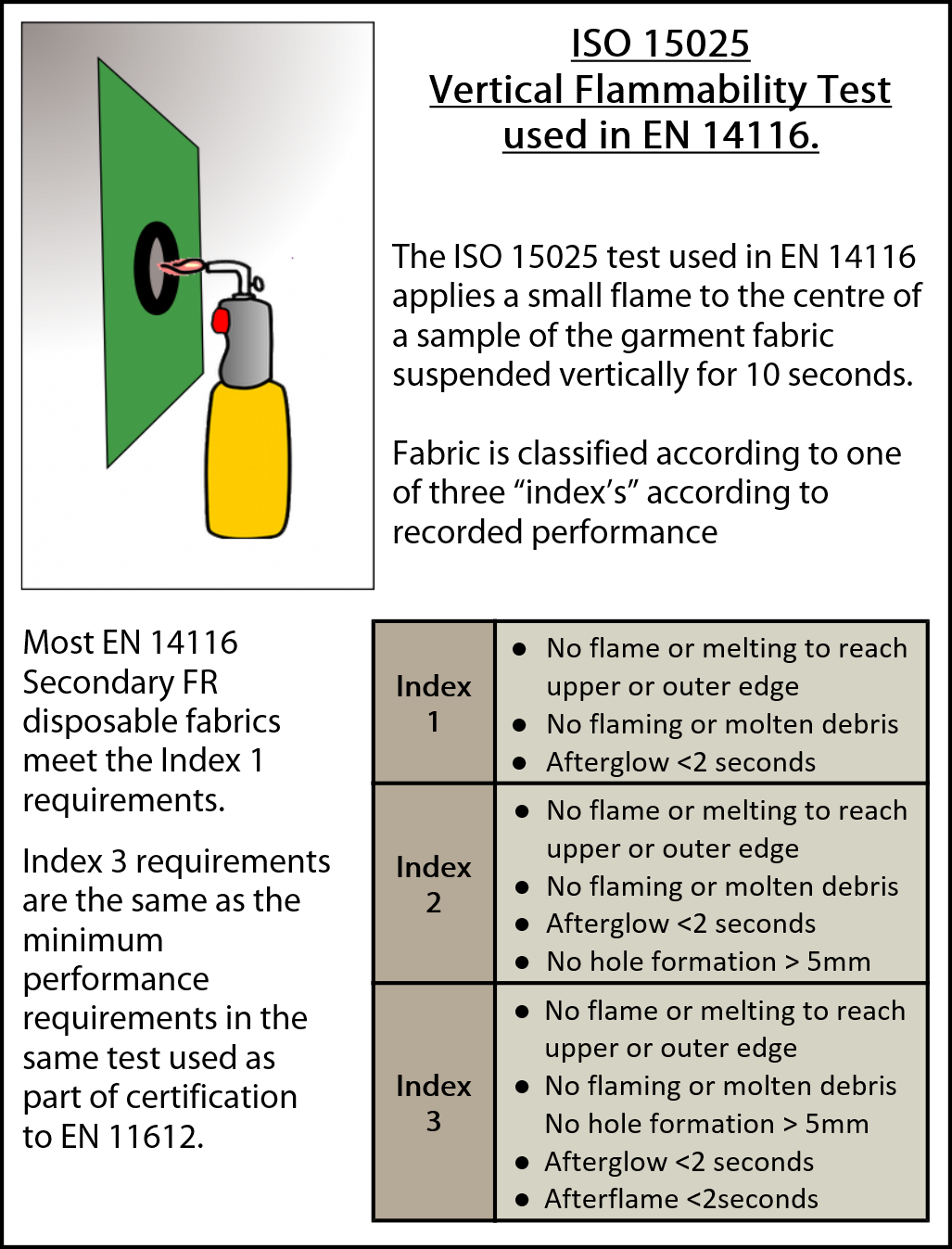 Such garments are certified to standard EN 14116 (not to EN 11612 which is for primary FR clothing). This standard uses a simple vertical flammability test (ISO 15025) to assess garment fabric; in simple terms, it confirms that in contact with a flame the fabric does not ignite, continue to burn or drip molten or burning debris (as a thermo-plastic fabric will). Most secondary FR disposables meet the requirements of Index 1 (as described in the panel), which allows holing but requires that the flame does not burn to the edge of the sample and that there is no flaming or melting debris. Essentially, it confirms the fabric does not ignite and burn.
Such garments are certified to standard EN 14116 (not to EN 11612 which is for primary FR clothing). This standard uses a simple vertical flammability test (ISO 15025) to assess garment fabric; in simple terms, it confirms that in contact with a flame the fabric does not ignite, continue to burn or drip molten or burning debris (as a thermo-plastic fabric will). Most secondary FR disposables meet the requirements of Index 1 (as described in the panel), which allows holing but requires that the flame does not burn to the edge of the sample and that there is no flaming or melting debris. Essentially, it confirms the fabric does not ignite and burn.
Until 2015, the version of EN 14116 in use was published in 2008. However, 2015 saw a revised version published with some additional requirements. Specifically, rather than just applying the flammability test to the garment fabric, it also requires it to be conducted on components such as the zip or front fastening assembly with a requirement that they remain functional afterwards. This is an important change that has some critical consequences for many garments currently on the market.
Currently, there are two types of secondary FR disposables available:
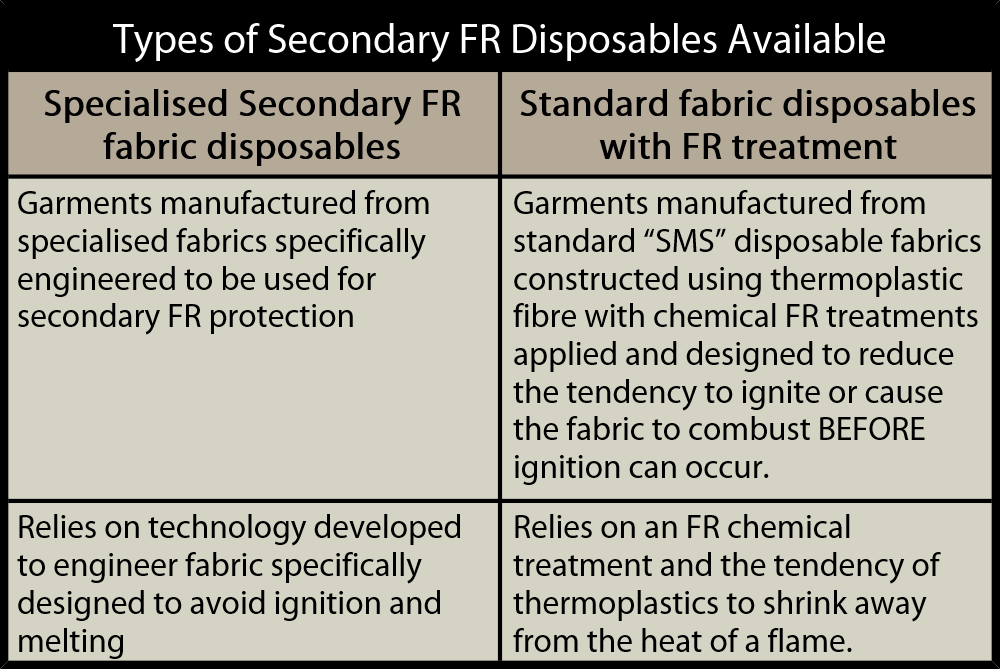
- Coveralls constructed with specialized fabric specifically engineered as a flame retardant product
- Coveralls that use standard disposable fabrics with chemical FR treatments to achieve a level of flame retardancy
Testing of market sourced garments of the second type – the standard disposable fabrics with FR treatments – has indicated that they rarely pass the vertical flammability test and have a high reliance on the fabric quickly shrinking from the heat of the flame (in the test, a 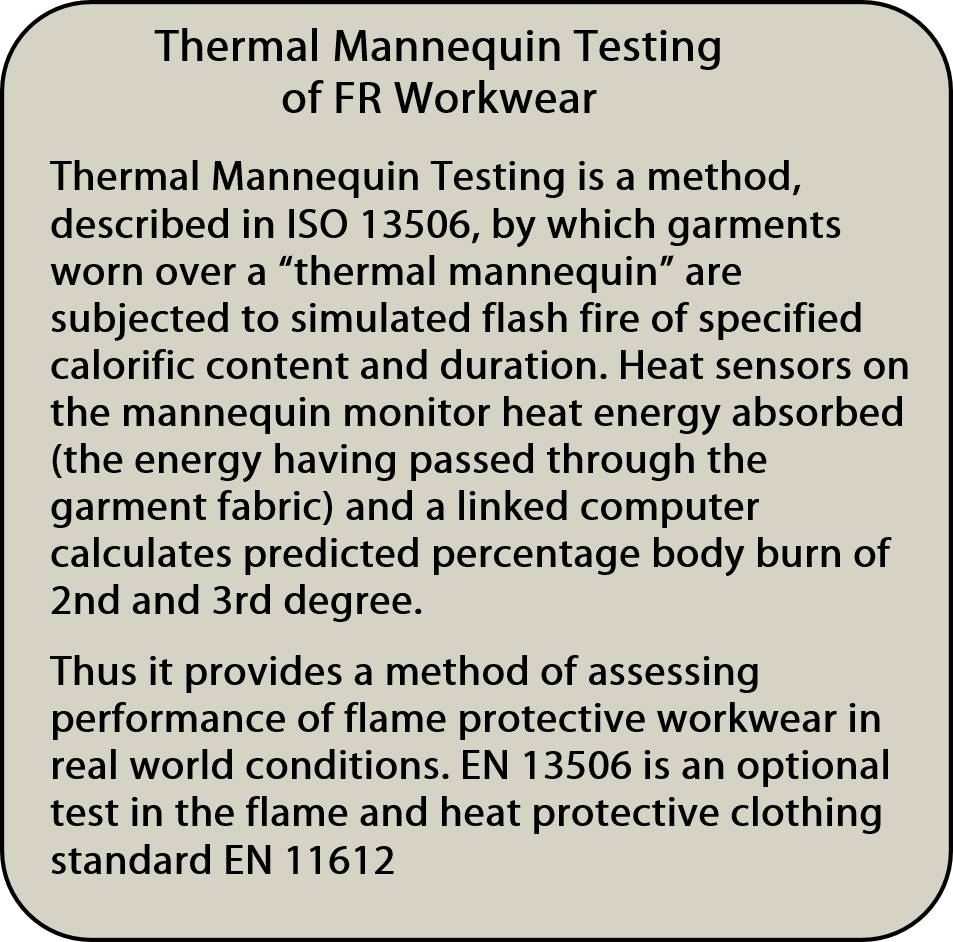 single flame is placed in one stationary position for 10 seconds – this is not, of course, reflective of the real world where a person in a flash fire may be engulfed by flames, and the flame is unlikely to remain on a single spot on the fabric).
single flame is placed in one stationary position for 10 seconds – this is not, of course, reflective of the real world where a person in a flash fire may be engulfed by flames, and the flame is unlikely to remain on a single spot on the fabric).
Further, thermal mannequin testing of various garments has indicated very little difference between an FR treated disposable garment and the same disposable garment without the FR treatment. A summary of test results on various combinations of disposable garments worn over the same primary FR workwear is shown in the table below.
Two key points to draw from the results are:
1. The Body Burn on the two specialized FR garments (Pyrolon XT and Pyrolon Plus 2) is substantially lower than the non-specialized coveralls and there are no resulting third-degree burns.
2. The difference between the standard non FR coveralls and the coverall with the chemical FR treatment is negligible (Body Burn of 20.5% vs. 19.6%) – and also the results on both feature both second AND third-degree burns.
The conclusion can only be that, in a real world scenario, the performance of specialized secondary FR disposables is far superior to standard disposables – and even to the standard disposables with FR treatment. In fact if you are paying extra for standard disposable coverall with FR treatment, you are paying for very little difference in performance. This is reflected in a short video of side-by side vertical flammability tests on a specialized (Pyrolon Plus 2) and non-specialized (FR SMS) fabric here.
Another difference in the real world compared to a lab test is that garments will commonly become contaminated in use (that is, after all, why they are used). If a contaminant is flammable, what are the consequences for performance?
The effect is shown in our video of vertical flammability tests on various fabrics here.
Clearly, then, evidence shows that using specialized FR disposable chemical protection rather than standard or FR treated disposables is vital to ensuring flame and heat protection is not compromised, even though on the face of it, the FR treated standard disposable may appear to be certified to the EN 14116 standard. Thermal mannequin testing indicates that FR treated standard fabric disposables, like standard disposables, should not be used as secondary FR protection.
But how are these products affected by the 2015 EN 14116 standard?
The new version of the standard requires the vertical flammability test to be conducted on components as well as on the fabric. Primarily, this means a test on the front zip fastening to ensure the same conditions are maintained and that the zip remains functional following the test.
All Lakeland Pyrolon garments have already been tested according to the new standard and all have passed (with some minor revisions to the Pyrolon Plus 2 coverall design).
However, initial and independent testing of a major brand FR treated standard disposable coverall suggests that these products will have great difficulty in meeting the new requirements. A summary of the results, compared with the results of the tests on the two specialized FR disposable coveralls offering Type 5 & 6 protection, is given in the table below.
The branded FR treated disposable Type 5 & 6 coverall failed on all counts, including the length of after-flame, holing, flaming or molten debris, and the functionality of the zip after the test. Meanwhile the specialized FR fabric coveralls passed on all counts, notably having after-flame of zero seconds. It is also worth noting the large variation in after-flame time on the FR treated coverall – between 10 and 63 seconds (the requirement is <2 seconds). Such large variation indicates that what FR properties exist on this product, if they exist at all, are at best highly inconsistent.
So the positive consequence of the change in the EN 14116 standard is likely to be that the many FR treated disposables and secondary FR coveralls currently available on the market and widely used will be withdrawn as they appear unlikely to pass the requirements of the new standard. Given their poor performance both in flammability testing and in thermal mannequin testing, this can only be seen as a good thing.
Lakeland’s Pyrolon range, including Pyrolon Plus 2, Pyrolon XT, Pyrolon CRFR, Pyrolon CBFR and Pyrolon TPCR, uses specialized FR fabrics to offer a range of chemical protection through Types 3 to 6. A table of Pyrolon garment certification is given below.
